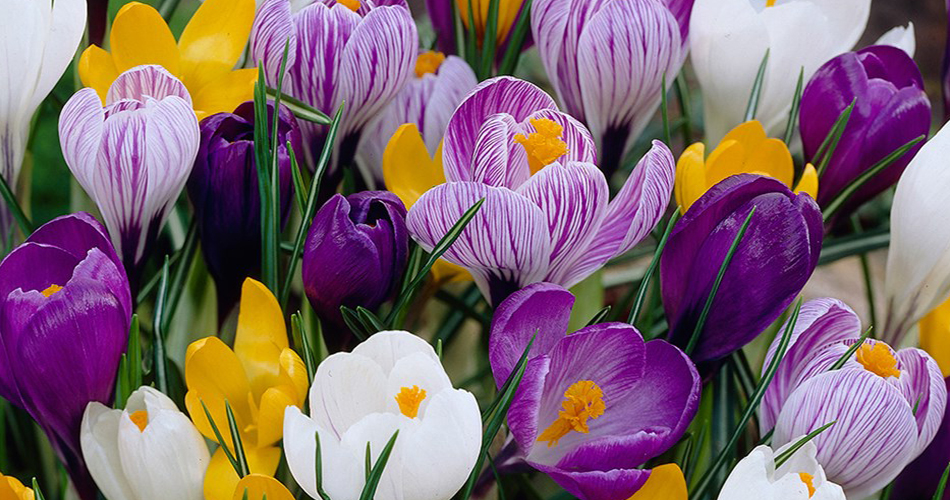Crocus, flowering plants that bloom in the spring or in the fall. They belong to the iris family. Their original home was in the warmer parts of Europe and Asia, but now they are grown in gardens in many lands.
Crocuses grow from a solid bulblike stem called a corm. The corm is an underground stem where food is stored.
The flowers of the crocus are white, lilac, purple, or yellow. Some of them have a very pleasant odor. Each flower has three petals, three sepals, three stamens, and a three-parted pistil. The sepals and petals form a long tube. The ovary where the seeds develop is at the bottom of the tube. When the seeds are nearly ripe, the stem lifts the pod aboveground. The ripe pod splits and scatters the seeds.
Slender, grass like leaves grow soon after the spring crocus has stopped blooming. Leaves of some fall-blooming crocuses appear the following spring. Others bear leaves and flowers together. Crocus leaves should not be cut until they die naturally so that more food can be made and stored in the corm.
Corms of spring-blooming crocus should be planted in September and October, those of autumn-blooming types in August. They should be planted three to four inches deep, in well-drained soil. New plants may grow from seed. Usually, however, they are raised from small corms that develop from the older corms. Crocuses may grow and bloom for years in the same place without replanting.


Be First to Comment